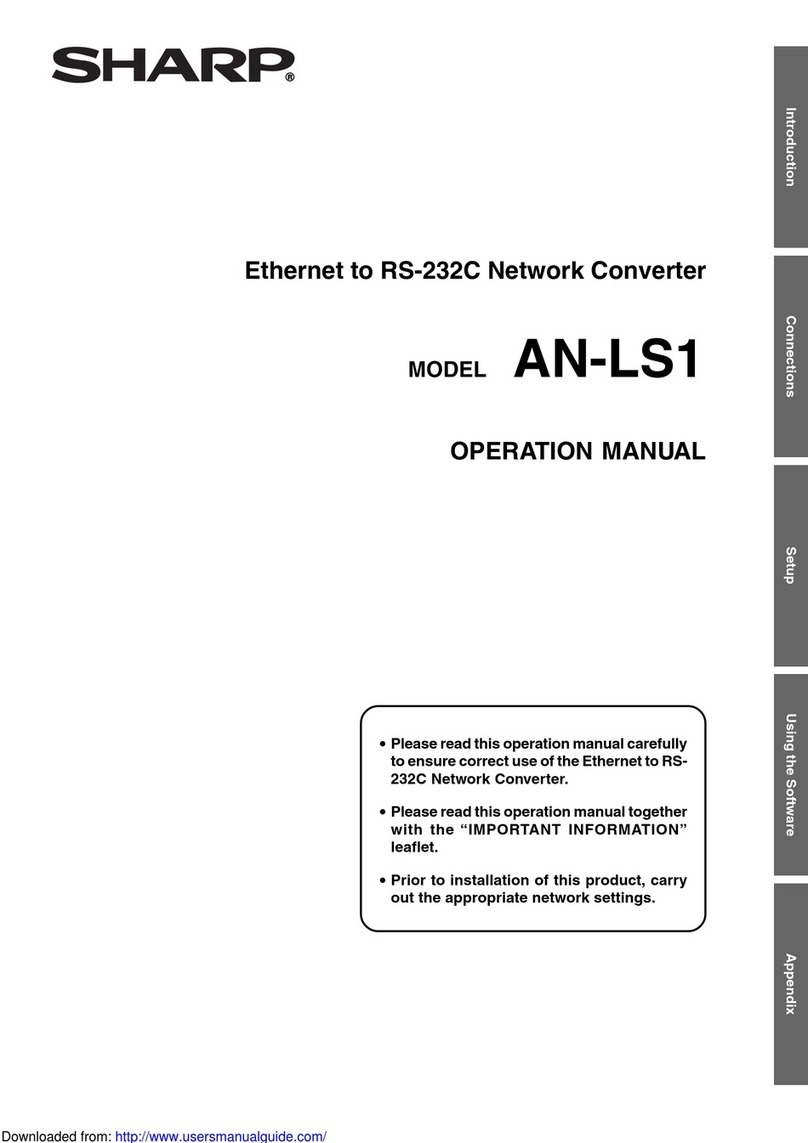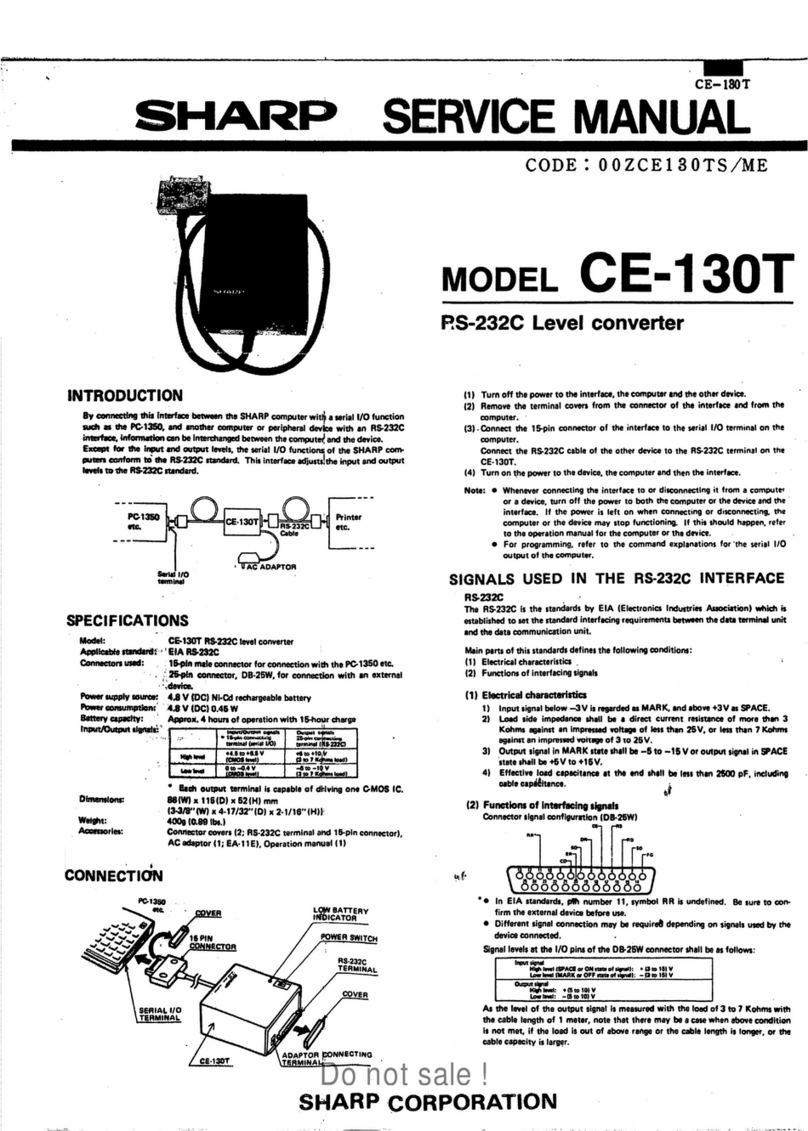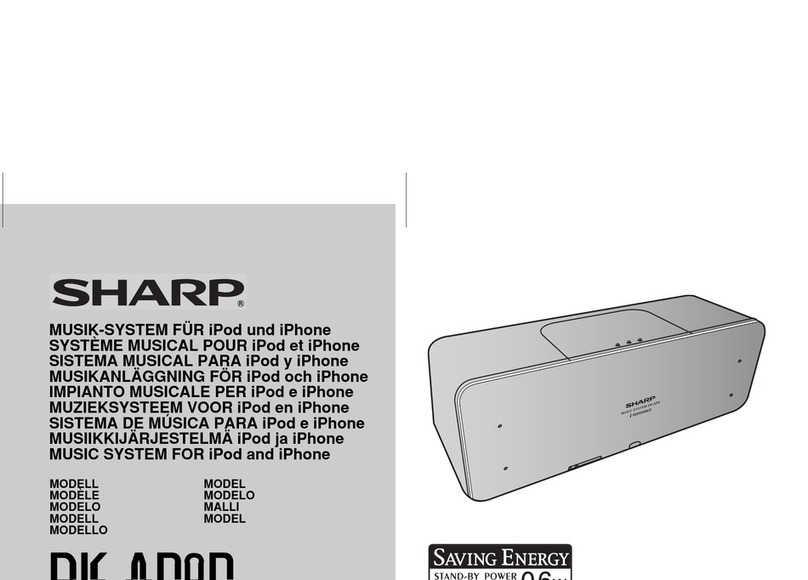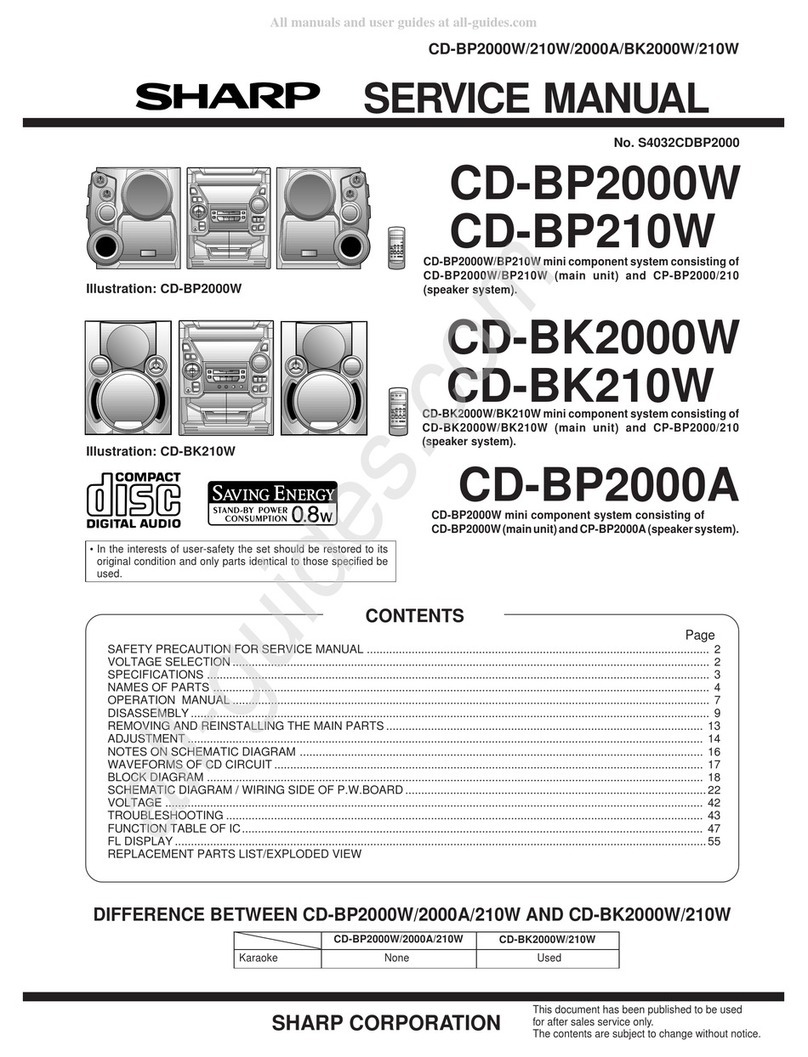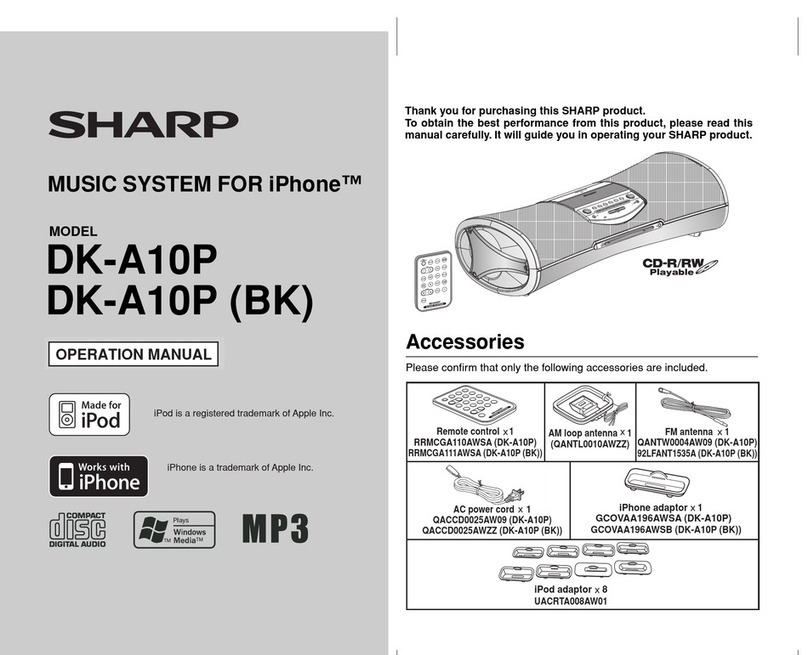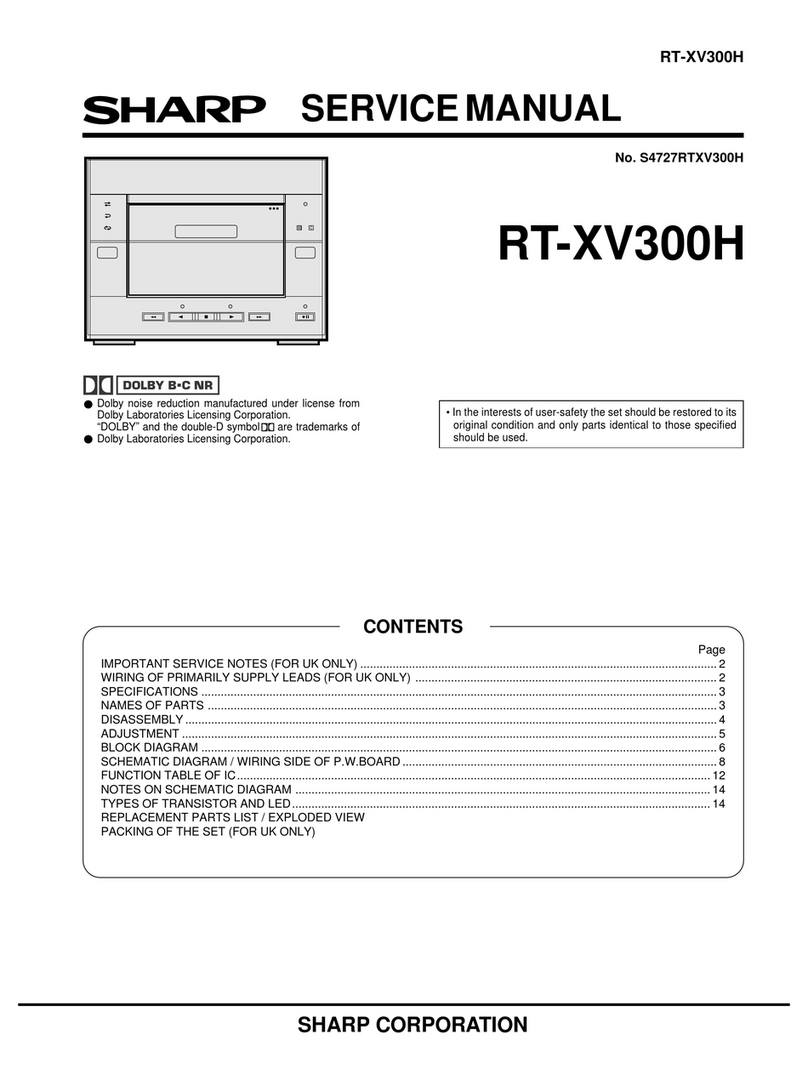
3
TU-DTV1000/A
IMPORTANT SERVICE SAFETY NOTES
ËService work should be performed only by qualified service technicians who are
thoroughly familiar with all safety checks and servicing guidelines as follows:
AC
VOLTMETER
1.5k ohm (10W)
0.15µF
TEST PROBE
TO EXPOSED
METAL PARTS CONNECT TO KNOWN
EARTH GROUND
WARNING
1. For continued safety, no modification of any circuit
should be attempted.
2. Disconnect AC power before servicing.
BEFORE RETURNING THE DTV DECODER:
(Fire & Shock Hazard)
Before returning the projector to the user, perform
the following safety checks:
1. Inspect lead wires are not pinched between the
chassis and other metal parts of the DTV decoder.
2. Inspect all protective devices such as non-metallic
control knobs, insulating materials, cabinet backs,
adjustment and compartment covers or shields,
isolation resistor-capacity networks, mechanical
insulators, etc.
3. To be sure that no shock hazard exists, check for
current leakage in the following manner:
»Plug the AC cord directly into a 120-volt AC outlet,
(Do not use an isolation transformer for this test).
»Using two clip leads, connect a 1.5k ohm, 10 watt
resistor paralleled by a 0.15µF capacitor in parallel
between all exposed metal cabinet parts and earth
ground.
»Use anAC voltmeter with sensitivity of 5000 ohm per
volt., orhigher, sensitivity tomeasure theACvoltage
drop across the resistor (See Diagram).
»All checks must be repeated with the AC plug
connection reversed. (If necessary, a non-polarized
adapter plug must be used only for the purpose of
completing these checks.)
Any reading of 0.37 volts RMS (this corresponds to
0.25milliamp.AC.)or moreisexcessive andindicates
a potential shock hazard which must be corrected
before returning the unit to the owner.
12345678901234567890123456789012123456789012345678901234567890121234567890123456789012345678901212
1
234567890123456789012345678901212345678901234567890123456789012123456789012345678901234567890121
2
12345678901234567890123456789012123456789012345678901234567890121234567890123456789012345678901212
SAFETY NOTICE
Many electrical and mechanical parts in DTV decoder have special safety-related characteristics.
These characteristics are often not evident from visual inspection, nor can protection afforded by them be necessarily
increased by using replacement components rated for higher voltage, wattage, etc.
Replacement parts which have these special safety characteristics are identified in this manual; electrical components
havingsuch featuresare identified by“å”and shaded areasin theReplacement Parts Listsand SchematicDiagrams.
For continued protection, replacement parts must be identical to those used in the original circuit. The use of a
substitutereplacementparts whichdonothave thesamesafetycharacteristics asthefactoryrecommended replacement
parts shown in this service manual, may create shock, fire or other hazards.
12345678901234567890123456789012123456789012345678901234567890121234567890123456789012345678901212
1
234567890123456789012345678901212345678901234567890123456789012123456789012345678901234567890121
2
12345678901234567890123456789012123456789012345678901234567890121234567890123456789012345678901212
